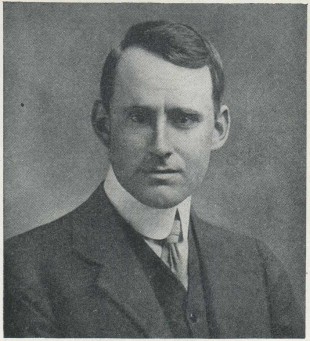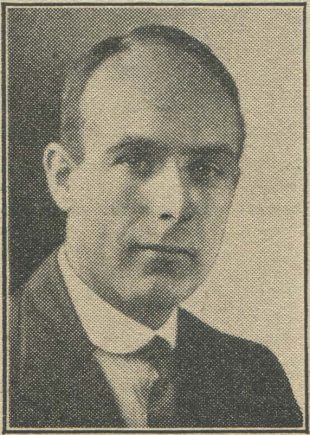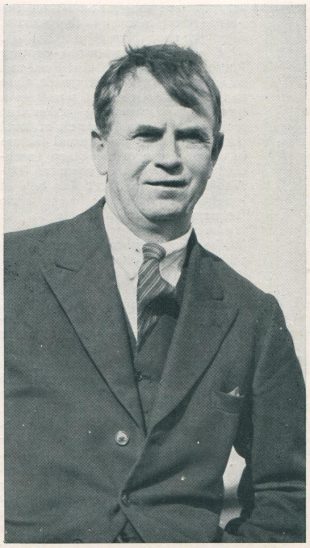…where east meets west
- Home
- Brief History
- The Greenwich Meridian
- Greenwich
(1675–1958) - Herstmonceux
(1948–1990) - Cambridge
(1990–1998) - Outstations (1822–1971)…
- – Chingford (1822–1924)
- – Deal
(1864–1927) - – Abinger
(1923–1957) - – Bristol & Bradford on Avon
(1939–1948) - – Bath
(1939–1949) - – Hartland
(1955–1967) - – Cape of Good Hope
(1959–1971)
- Administration…
- – Funding
- – Governance
- – Inventories
- – Pay
- – Regulations
- – Royal Warrants
- Contemporary Accounts
- People
- Publications
- Science
- Technology
- Telescopes
- Chronometers
- Clocks & Time
- Board of Longitude
- Libraries & Archives
- Visit
- Search
The First / Chief Assistants and the Deputy Directors
The most senior people at the Observatory after the Astronomers Royal and Directors were the First / Chief Assistants and the Deputy Directors. The powers and responsibilities assigned to them were normally quite limited.
The origins of the terms First Assistant and Chief Assistant

Arthur Eddington, Chief Assistant (1906–1913). Photo c.1914 by Elliott & Fry. From Hutchinson's Splendour of the Heavens (1923). Also published on 28 March 1914 by The Illustrated London News

Harold Spencer Jones, Chief Assistant at Greenwich (1913–1923), H.M. Astronomer at the Cape of Good Hope (1923–1933) and Astronomer Royal (1933–1955). From an article announcing his appointment as Astronomer Royal, but probably taken while he was Chief Assistant

William Greaves, Chief Assistant at Greenwich (1924–1937) and Astronomer Royal for Scotland (1938–1955). From an article announcing his appointment as Astronomer Royal for Scotland
From 1896 onwards, the Observatory had two Chief Assistant posts. The title of Chief Assistant seems to have gradually faded away following Woolley’s arrival as Astronomer Royal in 1956. The last time that the post is referred to in the Annual Reports to the Board of Visitors is in 1957.
La Crème de la Crème
The first First Assistant (Taylor) acquired the position by default as the longest serving member of staff. With the exception of Dunkin, all subsequent First and Chief Assistants until Atkinson’s appointment in the 1930s were exceptional maths graduates from Cambridge who tended to be recruited into post more or less straight from university. All were wranglers i.e. had first class degrees. Main was sixth wrangler (sixth in his class), Stone was fifth wrangler, Christie was fourth wrangler, Turner and Dyson were both second wranglers and their successors Cowell and Eddington both senior wranglers (top of their class). In 1910, rankings ceased to be made public, so the rankings of the remainder are unknown. This manner of selecting Chief Assistants was criticised by David Gill, Her Majesty’s Astronomer at the Cape of Good Hope (1879–1907), who in 1897 wrote: ‘They enter into chief positions where they have to superintend men who know much more about practical work than they do, and they have to pick up what they can of a hard and fast hide-bound system – which they are taught to regard as unquestionably superior to all others’.
Those who held the post of First or Chief Assistant typically went on to run an observatory of their own. They posts they went on to hold include those of the Astronomer Royal for Scotland (Dyson), His/Her Majesty’s Astronomer at the Cape (Stone, Spencer Jones and Jackson), Radcliffe Observer (Main and Stone), Savilian Professor of Astronomy at Oxford (Turner), Plumian Professor of Astronomy and Experimental Philosophy at Cambridge (Eddington) and Astronomer Royal at Greenwich (Christie, Dyson, Spencer Jones and Woolley).
The First / Chief Assistants were not the only wranglers to be employed at the Observatory. Between 1873 and 1892, three of the eight Second Class Assistants recruited were wranglers. These were: Crommelin who was 27th wrangler, Bryant (21st) and Hudson (17th). Their starting salaries were just 40% of that of the First Assistants.
Ambiguity in the 1930s and 1950s
When the Astronomer Royal resumed responsibility for the Nautical Almanac in 1936, its new Superintendent, Donald Sadler, was appointed on the same lower salary scale as the two Chief Assistants. In the staff lists in the annual reports to the Board of Visitors he is listed until 1949 as ‘Chief Assistant as Superintendent’ [of the Nautical Almanac Office]. In 1949, during a major regrading exercise, the three Chief Assistant level posts were graded at Senior Principal Scientific Officer level. The annual reports from that time onwards no longer refer to Sadler as a Chief Assistant, but the title of Chief Assistant remained in use in the reports for the other Chief Assistant posts until 1957. Its use there ceased when, following the resignation of Gold in 1956, Atkinson was promoted on individual merit to the Deputy Chief Scientific Officer grade. He was the first of several individuals at the Observatory to hold a post at this level.
Olin Eggen came to the Observatory from America in 1956 to fill a vacancy left by Gold. Appointed like Gold at the SPSO grade, he is often referred to as Woolley’s Chief Assistant. However although Atkinson was specifically listed as Chief Assistant in the 1957 Report to the Board of Visitors, Eggen was not. It is not clear therefore if he was appointed simply to a vacany at SPSO level, or to the post of Chief Assistant at SPSO level. There appears to be an absence of papers that might resolve the matter in the archives at Cambridge. Eggen left the Observatory in 1961, returning briefly at the DCSO(?) grade in the mid 1960s.
Chief Assistants acquired with the Cape Observatory
When The Greenwich Observatory took over Her Majesty’s Observatory at the Cape of Good Hope in 1959, it acquired another officer at the Chief Assist Grade in the form of David Evans. When Evans resigned to take up the Chair of Astronomy at the University of Texas in September 1968, he was not replaced
The post of Deputy Director … and more ambiguity
If Alan Hunter’s obituary is to be believed, the formal post of Deputy Director first appeared in 1967. According to Wilkins, the title merely recognised the job Hunter had been doing since 1961. Exactly who else held the post of Deputy Director and the extent of their duties is difficult to ascertain due the absence / unavailability of any official reports or personnel details. Wilkins reports that he was the last person to hold the post at Herstmonceux.
First Assistants
1811–1835 Thomas Taylor
1835–1860 Robert Main
1860–1870 Edward Stone
Chief Assistants
1870 Edward Stone*
1870–1881 William Christie (AR 1881–1910)
1881–1884 Edwin Dunkin
1884–1894 Herbert Turner
1894–1905 Frank Dyson (AR 1910–1933)
1896–1910 Philip Cowell
1906–1913 Arthur Eddington
1910–1914 Sydney Chapman (re-appointed in an honorary capacity May 1916 to Dec 1918)
1913–1923 Harold Spencer Jones (AR 1933–1955)
1914–1933 John Jackson
1924–1937 William Greaves
1934–1937 Richard Woolley (AR 1956–1971)
1937–1949 (Donald Harry Sadler (Superintendent of the NAO. Retired 1971))**
1937–1957 Robert d'Escourt Atkinson (Promoted to DCSO 1957, Retired 1964)**
1938–1945 Henry Rainsford Hulme
1945–1952 One post vacant
1952–1956 Thomas Gold
1956–1961 Olin Eggen**
*Originally appointed as First Assistant, Stone is referred to as Chief Assistant in the 1871 Report of the Astronomer Royal to the Board of Visitors.
** See notes above
Chief Assistant at the Cape of Good Hope
1959–1968 David Evans to Sept 1968 Chief Assistant at the Cape*
Evans was originally appointed to this position in 1953 when the Cape Observatory was being run as a separate institution
Deputy Directors
1967–1973 Alan Hunter
1980–1981 George Wilkins
1990–1991 Paul Murdin
199?–1998 Neil Parker
This list should be read in conjunction with the notes above.
© 2014 – 2026 Graham Dolan
Except where indicated, all text and images are the copyright of Graham Dolan